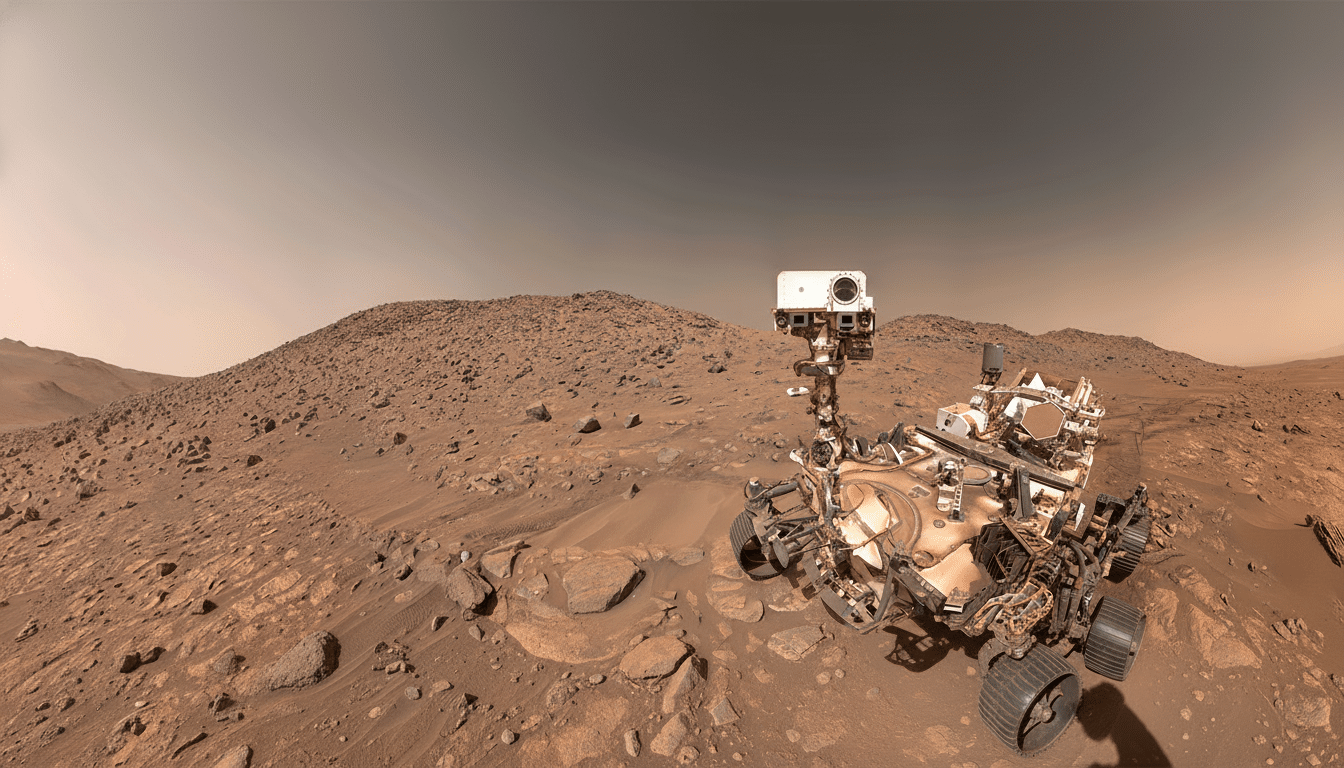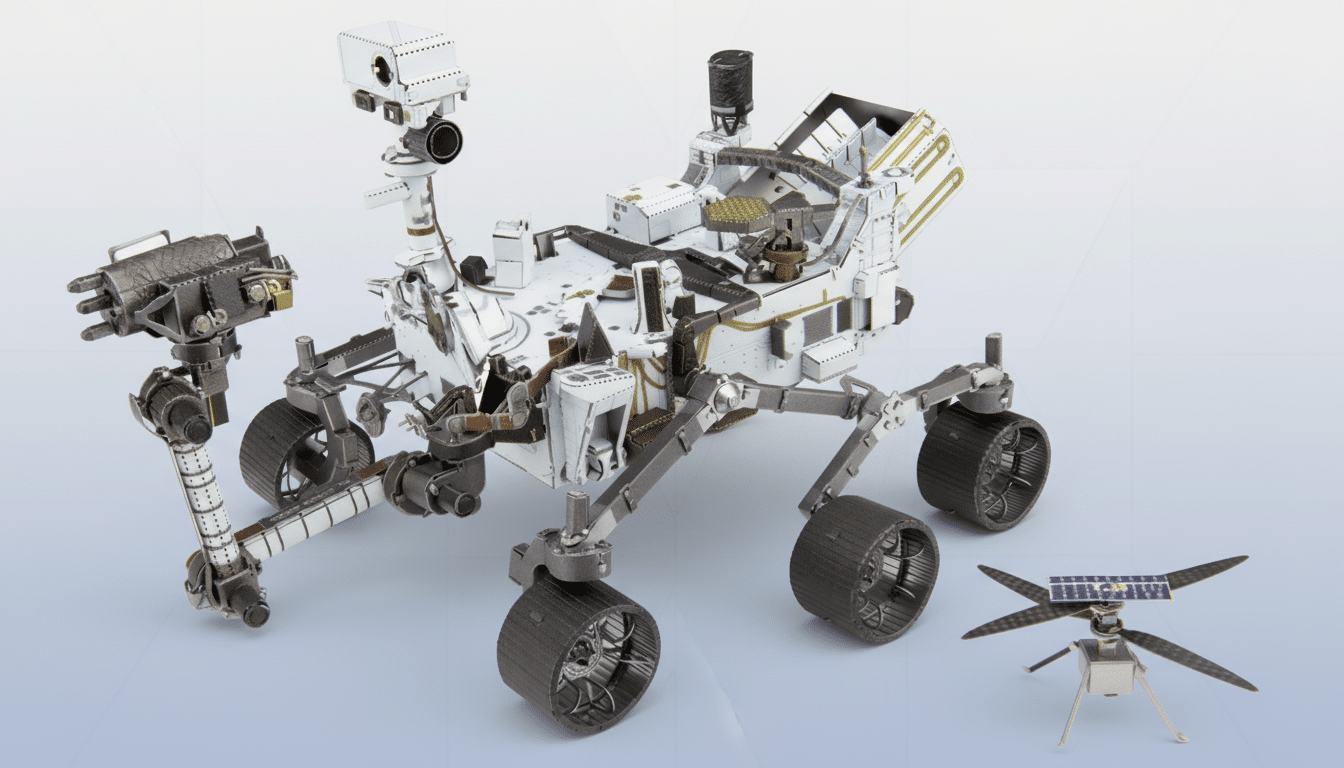NASA’s Perseverance rover has its sights set on an oddly shaped boulder protruding from the dusty flatlands beyond Jezero Crater, and mission scientists believe that its chemistry shouts out iron and nickel — a signature of metal-rich meteorites born deep inside massive asteroids.
If verified, it would be the rover’s first meteorite discovery on Mars.

What the Rover Saw While Examining the Odd Boulder
The rock, which scientists are calling Phippsaksla, is more than 2.5 feet wide and rises from a patch of flat, broken-up ground. That pose alone made it a curiosity: items not matching the local bedrock tend to make folks double-take on Mars. Perseverance drove in for a closer examination and took high-resolution pictures before aiming its SuperCam instrument at the target.
SuperCam, which employs laser-induced breakdown spectroscopy to vaporize pinhead-size spots on a rock and read the elemental signature in the resulting plasma, found concentrations of iron and nickel. That brew would be highly suggestive of a metal-rich meteorite, not a native Martian rock. The shape — smoother hollows with a dark sheen in some places — also matches how iron meteorites weather on Mars.
Why This Suspected Meteorite Find on Mars Matters
Perseverance’s sister rovers have had their own encounters with shiny metal hitchhikers. Curiosity recorded many individual iron-nickel nuggets in Gale Crater, such as a foot-wide rock it unofficially named Cacao, while twin Spirit and Opportunity missions found similar meteorites across Meridiani Planum and Gusev Crater. Jezero, by comparison, had been oddly silent.
That silence puzzled the team. “Jezero’s geologic age and the fact that small impacts show up there suggests it has them, and now we can keep looking until we find one,” Purdue University research scientist Candice Bedford said in a mission update. Phippsaksla, situated on impact-blemished older bedrock outside the crater perimeter, may fill that discrepancy by revealing that such objects were hanging out in the nearby plains.
Martian Conditions Are Good for Meteorites
Metallic meteorites hold up well on Mars. The planet’s sparse atmosphere does not cause the searing deceleration and fragmentation that happens in Earth’s thicker air, while iron objects do not corrode quickly in its cold, dry environment. That ability to endure can leave them sitting on the ground like cairns, long after any small crater that delivered them has been obliterated by wind and dust.

Outside Mars, meteorites pelt the solar system. Scientists estimate that about 48.5 tons of meteoritic material falls to Earth every day, but most of it comes as dust or ends up in the oceans. About 60,000 meteorites have been found on Earth to date, most from asteroids, and a smaller number thought to be from the Moon or Mars. At least 175 Martian meteorites — all igneous rocks that solidified from magma at some point in their history — have been discovered on Earth and analyzed inside laboratories.
On Mars, the Meteoritical Society officially recognizes 15 meteorites identified by rovers since 2005. Curiosity’s Cacao, a metal-rich specimen that has not yet made it to the official list, is a reminder of how classification can fall behind discoveries as teams wrap up follow-up analyses.
How Scientists Will Verify and Classify the Find on Mars
The Perseverance team plans to conduct more remote sensing of Phippsaksla to pin down its source. SuperCam will be able to zap more laser shots to have better data on these iron and nickel ratios, while instruments such as PIXL can map elemental distributions at the micrometer scale. The team says that SHERLOC’s spectral information can also be used by mission scientists to explore surface textures for faint fusion crust and weathering patterns typical of metallic meteorites.
And though collecting samples of ancient lake and delta deposits for eventual return to Earth are higher up on Perseverance’s list of priorities, documenting a metal-rich visitor has scientific value. Meteorites are time capsules of the early solar system, and on Mars they also serve as natural reference points: stable chemical beacons that help scientists measure erosion rates, wind patterns, and even instrument calibration through the years.
A First for Perseverance in Its Jezero Crater Campaign
An iron-nickel meteorite would be an important deed in Perseverance’s journal. It links Jezero’s history to the larger record kept by Curiosity, Spirit, and Opportunity, and provides a fixed point of reference on a terrain that shifts continually under the shove of dust and wind. If Phippsaksla is confirmed, Perseverance will become a member of the squad of Mars rovers that have — after all these years of driving rigorously within planetary confines walled by protective nationalists, suspicious scientists, and cautious mission planners — examined pieces of worlds far from where they fell.

